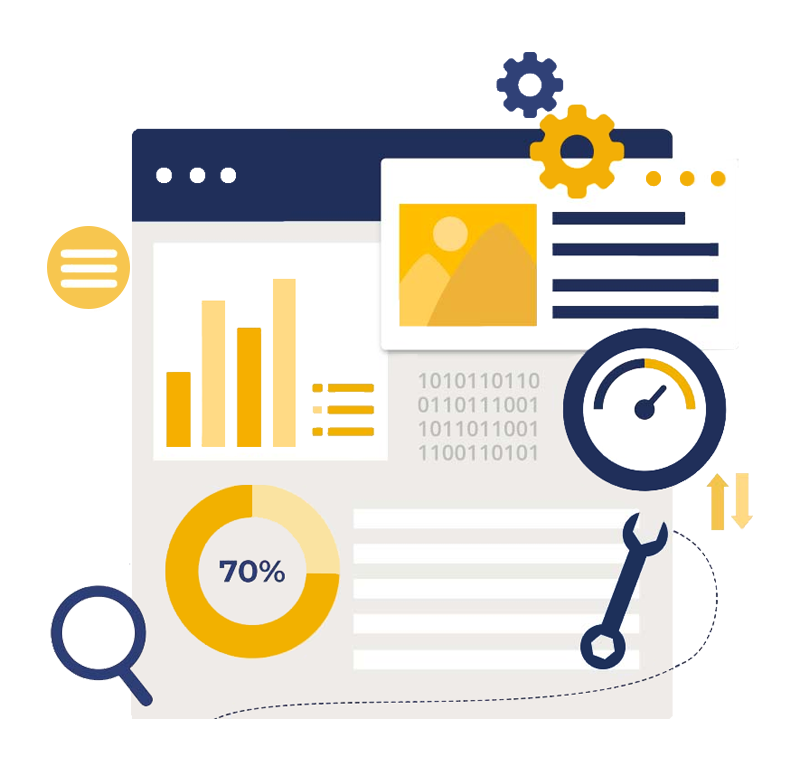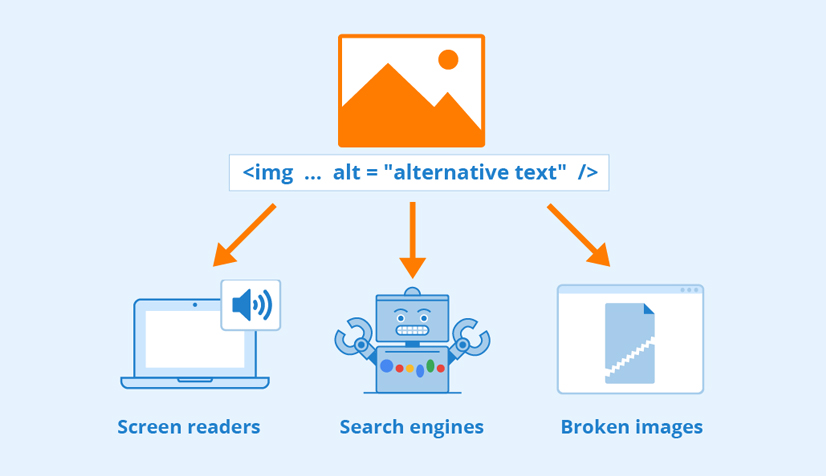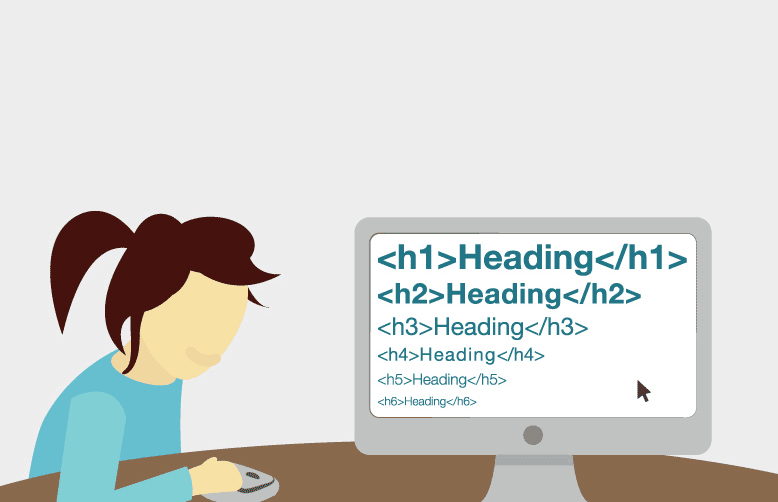Although often undermined by newbies in this industry, on-page search engine optimization, or SEO, is necessary to create user-friendly content. Website designers and website content writers will always suggest you make your content user-friendly by incorporating SEO elements. When done correctly, you will notice that SEO is a great feature to improve rather than hinder a visitor’s experience on your website. In this blog, you can go over various examples of how to boost SEO, keeping the user in mind.
On-page SEO (also known as on-site SEO) is the process of optimizing website content and pages for targeted keywords to increase search significance and visibility and search traffic. It involves keyword-aligning page-focused elements such as title tags, headings, contents, and internal links. On-page SEO is essential for search engine optimization (SEO) since it assists Google in determining what each bit of content on your business site is about. The better Google interprets your content, the better you will rank in search results, resulting in more organic visitors, conversions, and money.

Google’s search algorithm is continually developing. It has run around 800,000 experiments and modified its search algorithm over 5,000 times in 2021. Nonetheless, despite ongoing advancements, it is not flawless. As a result, Google still requires assistance in comprehending new information. On-page SEO can help with this.
On-page SEO is essential since it assists search engines in understanding your website and its contents and determining whether it matches up to the searcher’s doubt. As search engines improve, there is a higher emphasis on relevancy and interpretation in search engine results pages (SERPs). Luckily, an on-page SEO strategy isn’t as complicated as some claim. The truth is that there are only a few ranking elements to be concerned about. Your top priority should be to create an amazing user experience rather than over-optimizing content for bots.
Google teaches its spiders to think in human terms. As a result, best-in-class SEO tactics are also best-in-class people practices. Furthermore, Google (and all other search engines) aim to deliver relevant and meaningful results whenever anyone performs a search. As a result, Google’s search algorithms are designed to reward useful information while punishing those who try to exploit the system with unfriendly-user content tactics.
With that in mind, here is a quick rundown of seven on-page SEO tactics that show how strong SEO, good writing, and good design can all come together to produce an amazing result. Of course, this is not a complete list of content optimization methods, but websites that address these issues correctly have a solid basis.
A web page’s major keyword phrase should clearly and accurately explain the page’s main topic. The phrase should be placed at the start of the main website page heading for optimum impact. When consumers browse a website, they are pulled to the headline. If people have to wait for even a few seconds to understand its significance, they may simply click away.
Including keywords in the headline benefits readers, which is why popular search engines like Google encourage it.
Bullet points appeal to search engines because they believe bulleted content is important (else, why would anyone bullet it?). Similarly, humans also share this viewpoint. When a writer can transform content from a homogeneous block of text into a brief list of bullet points, readers and search engines may immediately and firmly grasp the message of that page.
Extremely extensive lists are generally undesirable since they confuse the reader and, for the same cause, search engines presumably disregard them.
Another approach to communicating to search engines — and site visitors — that material is significant is to utilize bold type. Limiting the use of bold print to keywords is a good practice in general. However, too much bold text, particularly when applied haphazardly, confuses the reader. The lack of bold design results in a mass of homogeneous text that turns off the reader.
What you want is to draw the reader’s attention to the main idea of the page. Thus SEO and user-friendliness go hand in hand once again. The italicizing text also catches the recognition of search engines and readers. Still, it is discouraged because italics in the body of the text can be challenging to read at times.
By using keywords to express the link’s content, you notify the reader and search engine of what the new section is all about. Some will argue that “click here” is the best option because people are often likely to comply with a clear command.
While you can see this reasoning working for product pages and email campaigns, don’t think it works as well for websites. If the “click here” method is utilized universally, you will end up with a site where any link appears the same, and the urgency of the instruction will be lost. This circumstance is obviously problematic for both the user viewing your site and web crawlers crawling your links for information.
In terms of search engines, the title element on a web page is perhaps the most important text on the page. Unfortunately, most web designers and copywriters are unconcerned about metadata in general, believing that human readers do not notice it, even though what goes inside an HTML document’s head element is critical. So instead, metadata is viewed by site visitors.
When people execute a search, the value of the title tag appears in search bars, browser tabs, and search engine results pages. They’re also picked up instantly by tweets sent through the Twitter app. Thus, the browser view is really significant.
If a visitor has numerous tabs open, you will want them to be able to quickly determine which page or pages of the client’s website are active. Thus, the tab should display a well-informed meta title, with key phrases at the start and advertising at the end. Constructing amazing titles can also help with usability. It is recommended to utilize the passive voice to place keywords in headers and page titles, even when the active voice is generally better for web content readability.
When web pages inside a site are logically linked together, search engines interpret them as logically connected; that they depend on one another to tell a story. Because the material is perceived as essential not only on its own but also as part of a larger picture, this interconnectedness raises the search value of individual sites and the domain. A robust internal link structure is an important component of a site’s overall information architecture and, from the perspective of a visitor’s ability to navigate the site.
Internal links, whether they appear as footer links, breadcrumbs, text links, or a combination, will be simple for search engines to follow if they are easy for the audience to follow. Internal and general links are most effective for SEO when the anchor text contains keywords related to the target page. The footer links in the preceding example, which are part of a design scheme used by our organization for many lead generating sites, are targeted for the most crucial site pages.
Few sites feature images that are well optimized, which is terrible in several ways. Poorly optimized photos lead sites to lose valuable search possibilities, distract from the customer experience, and miss out on wonderful conversion potential. Instead, you should focus on three approaches to optimize photos for SEO that are also good for usability.

The alt attribute explains the image in basic English. It’s ideal for infographics and visuals that convey complicated ideas or vital facts.
If a visitor is unable to view the image, they will be helpless in the absence of an alt attribute. Thus, it is a fallback method for users who have issues replicating images, have images turned off while browsing and readers who are not able to view their screen and tend to depend on screen-reading software.
When you hover over an image, the title appears. What kind of the first impact do you want to establish on your viewers? Are they going to see “IMG70886105.jpeg” or “Business Vocabulary and Grammar Improvement Tips”? Include a caption that is keyword-optimized.
A caption improves almost any image, particularly on interior service and product pages. A reader will focus rapidly on an image and is very inclined to read any material surrounding it. This is an excellent opportunity to showcase a crucial product feature or a unique service capacity — while also providing search engines with additional content to index and rank.
Image search can be a great way to get highly qualified traffic. People look for photos for a variety of products, and there is less competition because fewer sites are geared for image search.

1.
A high level of collaboration is required for successful web development. This is the conclusion that expert designers, SEOs, and writers always reach. Websites fail in search engines when designers ignore SEO.
2.
When SEOs ignore design, websites fail to attract visitors. Because nearly every e-commerce and leading generation site seek increased search traffic and conversions, any outcome will fall far short of customer expectations. Writers, like everyone else, cannot expect to be purists or function in a vacuum.
3.
Google’s concentration on excellent content is undeniable: Google recently released a new algorithm to tackle content spam, a strong indication that it intends to penalize manipulative SEO practices while rewarding high-quality, relevant web text. Nonetheless, writers who feel themselves above the SEO battle advocate a ‘develop it and they will arrive’ technique. Unfortunately, this approach nearly never works.
4.
The winning strategy will combine design, SEO, and writing throughout the development phase.
As now that you have a better understanding of on-page SEO indicators be sure to keep them in mind when creating new pages. However, the most critical aspect of any SEO plan is patience. Great results need time, commitment, and some learning from mistakes.
TOP